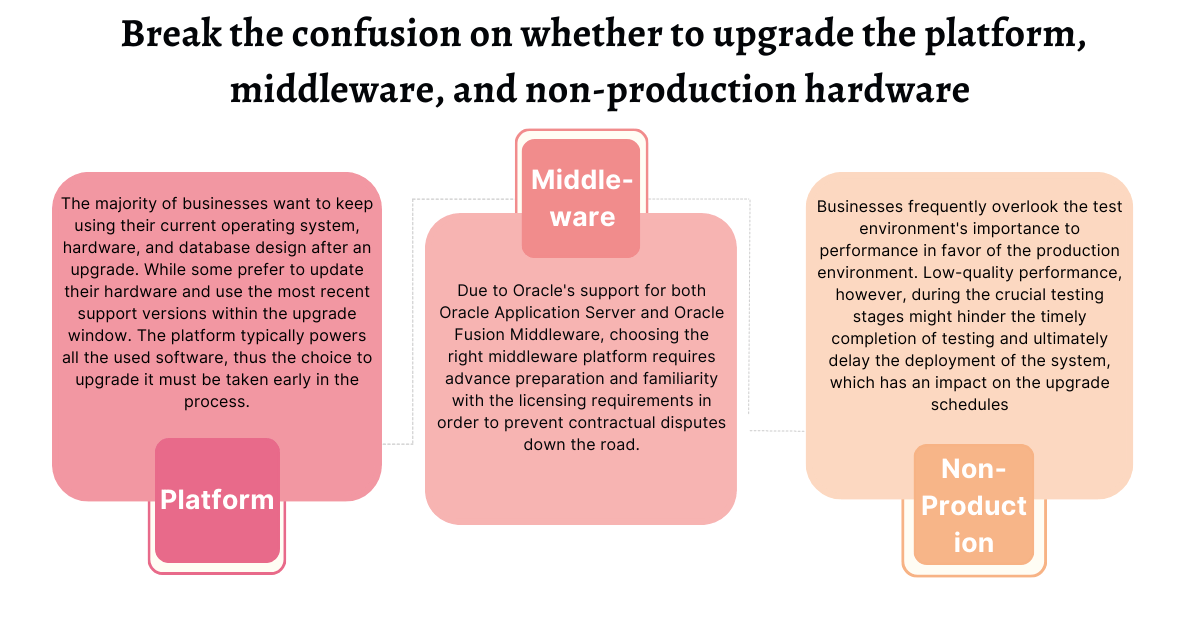Navigating the complex landscape of Oracle EBS test automation can be a formidable task, marked by a myriad of challenges that demand careful consideration and innovative solutions. As organizations rely on Oracle EBS to streamline their critical business processes, it becomes paramount to ensure the suite functions flawlessly. Yet, this pursuit is often hindered by obstacles ranging from data management and test automation to compatibility issues and Oracle EBS test automation environment complexities.
To make sure that your Oracle e-business suite continues to function as planned while keeping up with all the new updates and releases, you need a strong Oracle EBS automation testing approach.
This blog explores the multiple Oracle EBS testing challenges that organizations face and uncovers the effective strategies to overcome them, empowering organizations to harness the full potential of this robust business solution while maintaining the highest standards of software quality and reliability:
1.Choosing the Upgrade Path
Before switching to the target release, it’s critical to determine whether the current IT environment can be directly upgraded to the most recent version. Additionally, organizations struggle with foreseeing the complexity of the upgrade activity, particularly the quantity of modules to be implemented, the type of customizations required, the number of integration points, the kind and number of interfaces, and the overall quantity of scripts. The cost and metrics related to each stage of the upgrade must be determined, and an upgrade assessment must be used to guide every decision.
2. Ensuring the Completeness and Accuracy of Data
It may be difficult to ensure the accuracy and completeness of data when getting ready for a successful upgrade. IT must be up to date on best practices for handling duplicate records, making sure data integrity, and keeping the data healthy in Oracle EBS test automation. A clear methodology should be in place during the pre-upgrade phase to identify whether best practices are already being used or whether new ones are required to assure the accuracy and dependability of the data. This crucial step ensures the availability of high-quality data for efficient table conversions and the smooth running of the Oracle E-Business Suite solution after the upgrade.
3. Making your Technical Environment Ready
The complexity of the upgrade project in Oracle EBS test automation framework rises with each modification to the architecture. To make the adjustments at the proper moment, careful planning is necessary, as is the technical work needed for this task. Additionally, if a thorough performance test is not conducted prior to the go-live date, some organizations have performance-related problems at that time. This action guarantees system optimisation, maximizing throughput from resource availability, and minimizing bugs at go-live. It is excellent practice to get an evaluation done early on to reduce uncertainty and give IT more time to focus on the crucial upgrading tasks.

4. Determining the Size of New Hardware
If you want to choose whether to upgrade one or more servers, add extra hardware resources, or stick with the current hardware, you must accurately size your new architecture. Given the complexity of the upgrade process, a number of variables, including Oracle EBS testing tools functionality, technical advancements, the use of applications in the future, and module scale-up, may have an impact on the updated solution’s sizing requirements. Determining the appropriate hardware requirements and doing adequate performance and load testing can optimize the upgrade procedure.
5. Recognising Scripting & Custom Code
The upgrade process of Oracle EBS test automation frequently has an impact on incorporated custom code. The IT staff must not only recognize these retrofit initiatives but also monitor their development throughout the project. Any customization must be registered by the system administrator as a custom application. On the application server, a supporting directory structure must also be built. These actions will make sure that no custom programs that have been registered as modifications are altered throughout the upgrade procedure.
Also necessary to ensure the integrity of APIs or tables in the upgraded software is thorough testing of all changes, including form customizations, all interfaces, customized reports, and descriptive flex fields.
Oracle EBS test automation presents a multifaceted landscape of challenges, but with the right strategies and tools, these hurdles can be successfully overcome. By addressing data management, optimizing test automation, ensuring compatibility across modules, and streamlining test environments, organizations can unlock the true potential of Oracle EBS. Moreover, a proactive and adaptive testing approach ensures that businesses can keep pace with evolving technologies and changing business requirements. Through diligent efforts in overcoming these challenges, organizations not only ensure the seamless operation of their Oracle EBS but also set the stage for innovation, efficiency, and sustained success in an ever-evolving digital business landscape.
